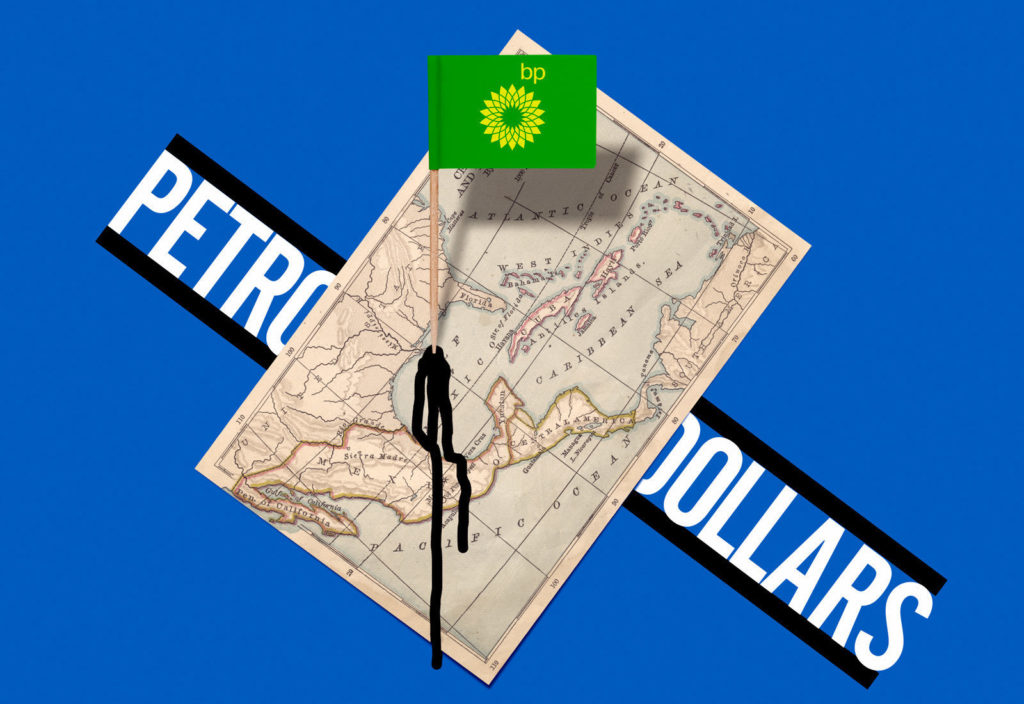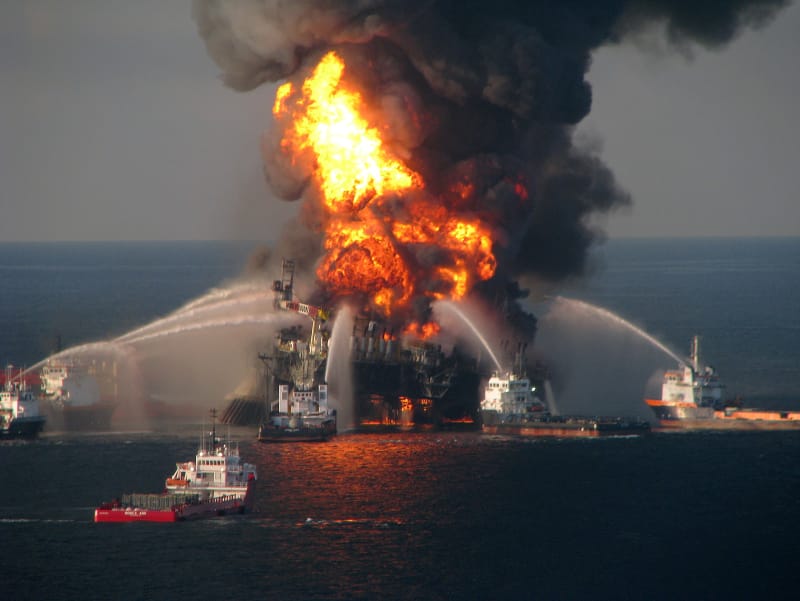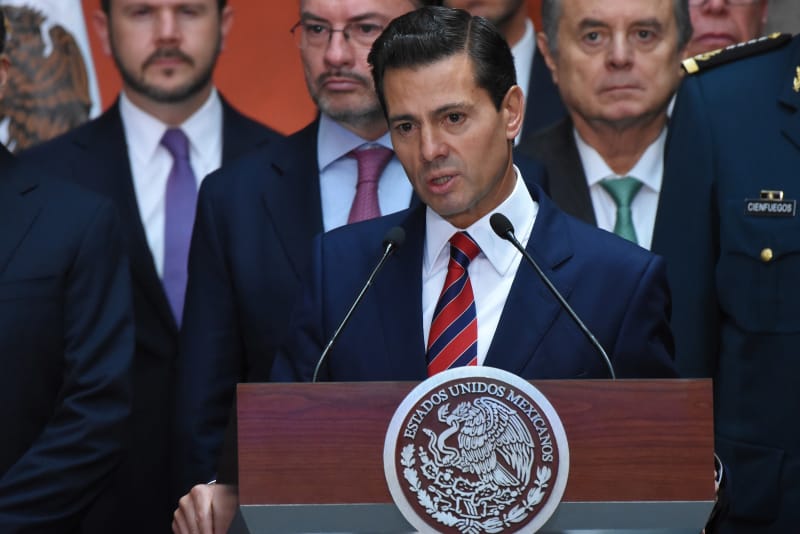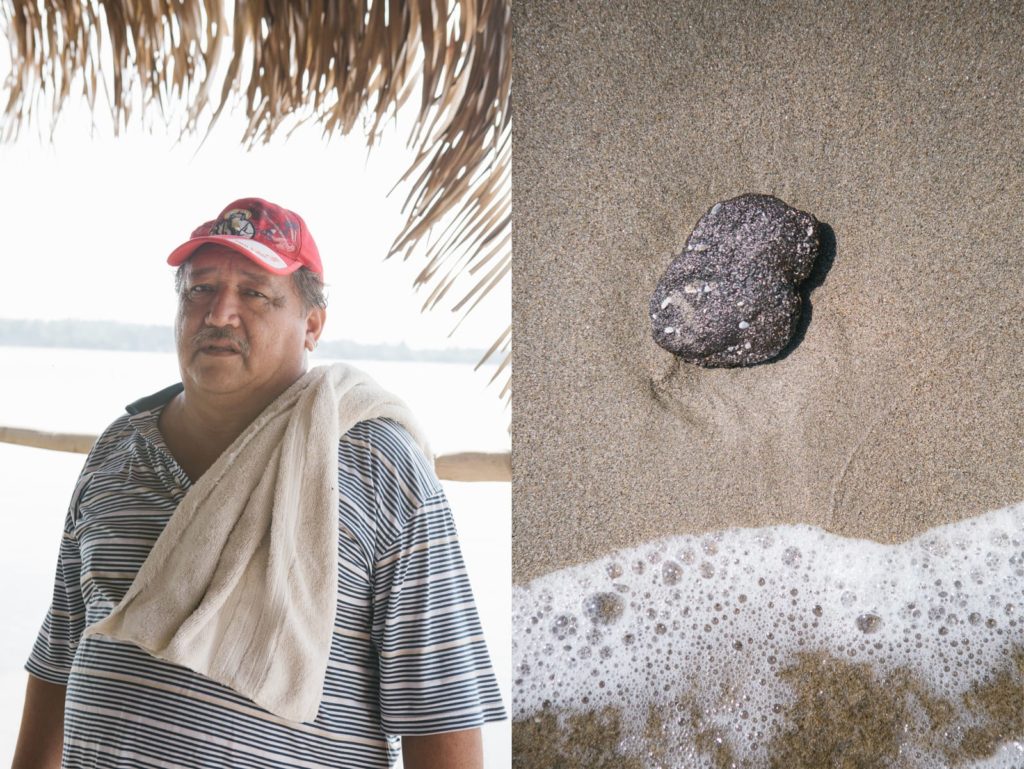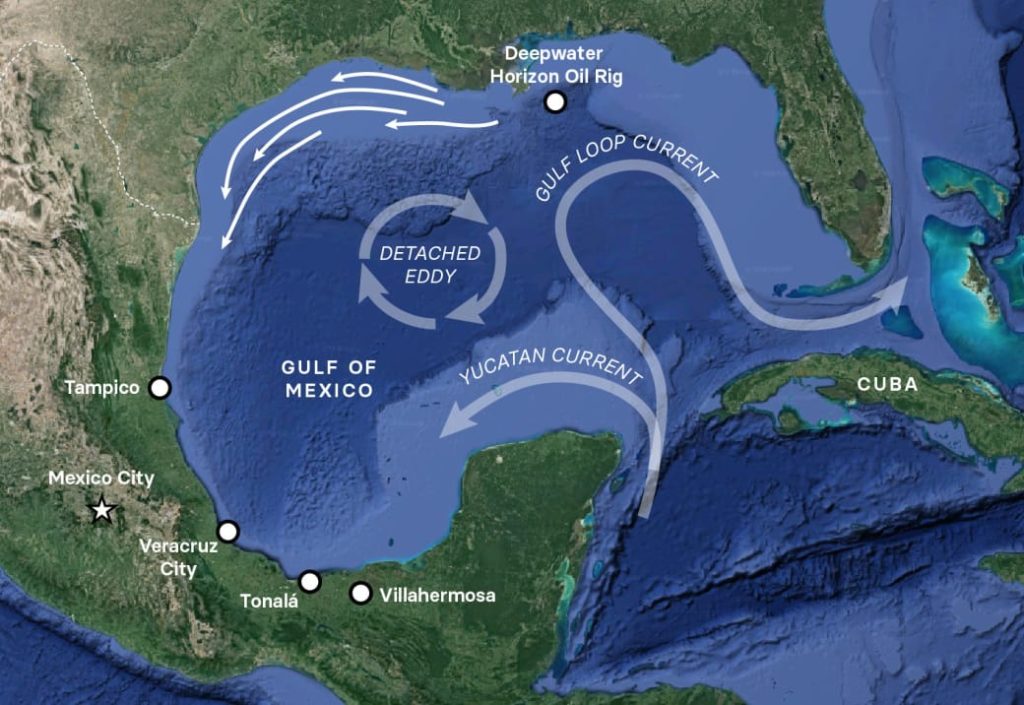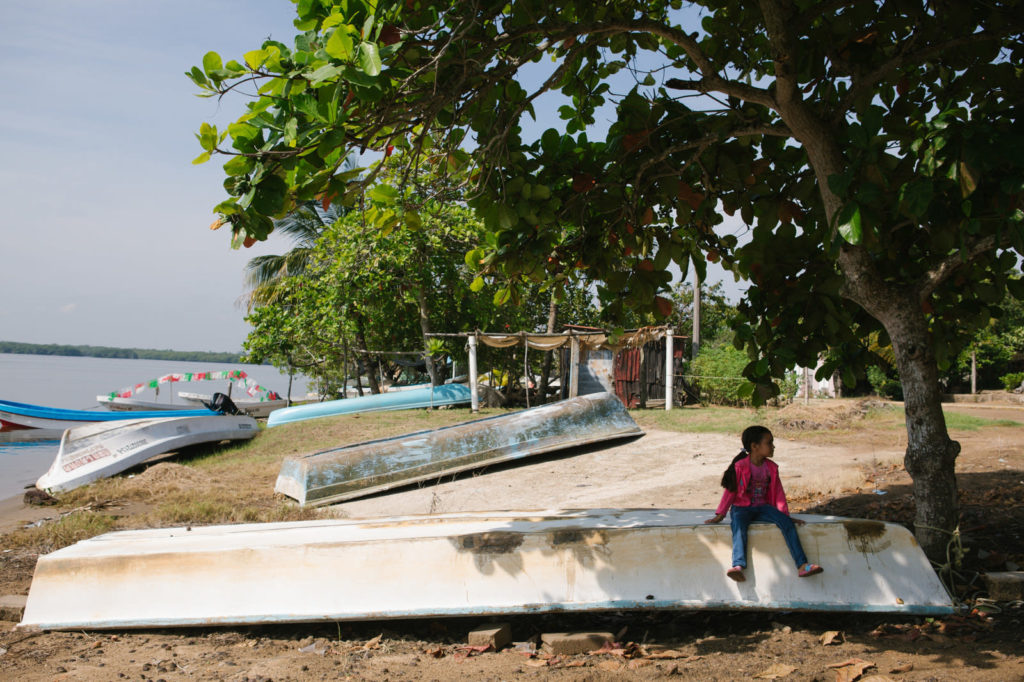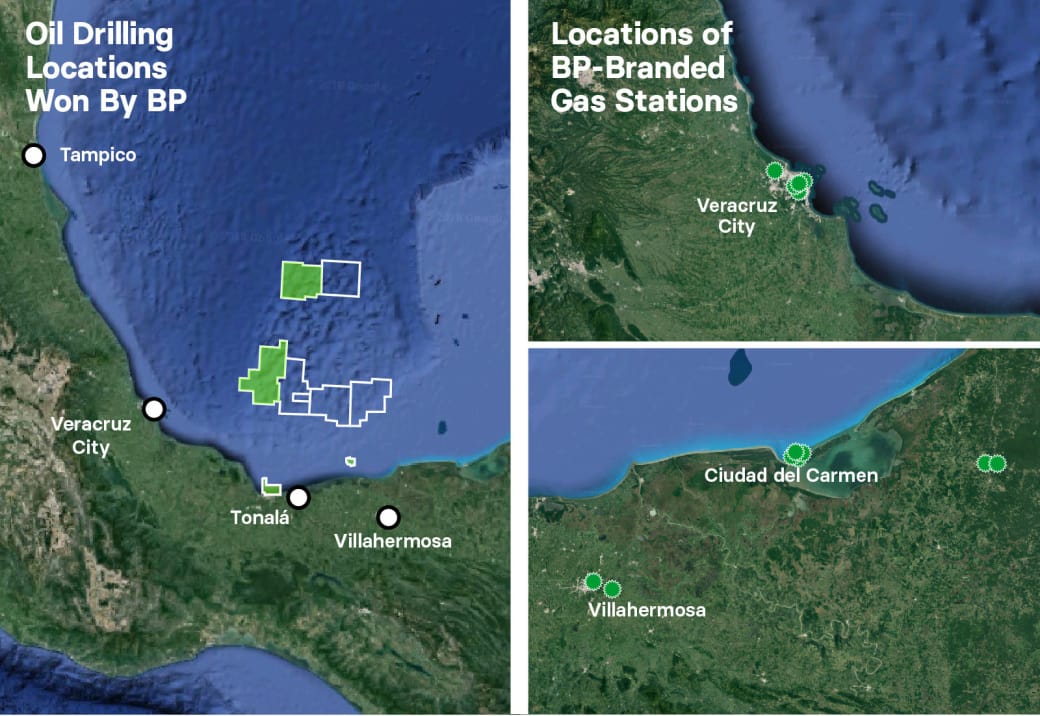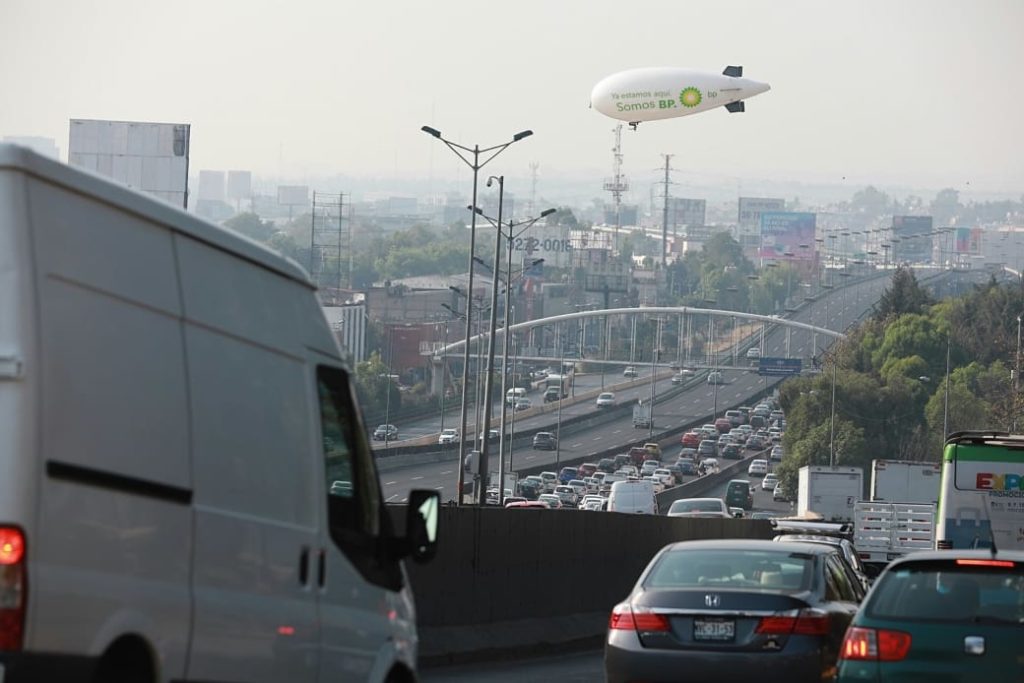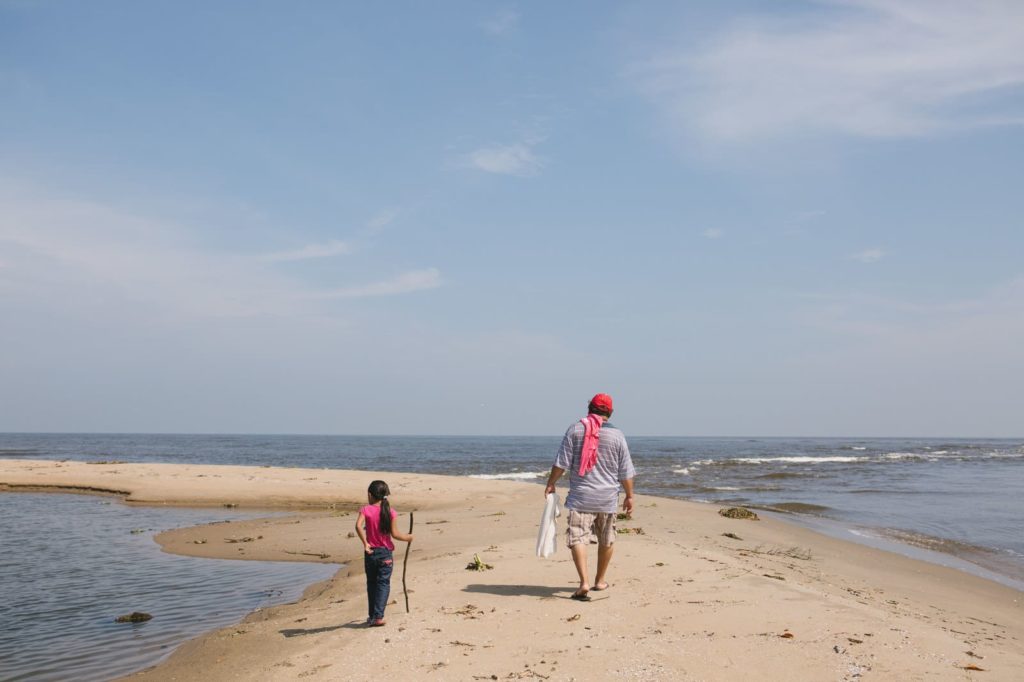Revealed: Documents Show BP Quietly Paid Just $25 Million to Mexico after the Worst Oil Spill of the Century
ENVIRONMENT, ANGLO AMERICA, ENERGY, LATIN AMERICA AND THE CARIBBEAN, JUSTICE, CAPITALISM, 1 Oct 2018
Nathaniel Janowitz | BuzzFeed – TRANSCEND Media Service
After the Deepwater Horizon drilling rig exploded in 2010, BP paid out more than $60 billion in the US. More than eight years later, Mexico quietly settled with the oil giant for $25 million.
28 Sep 2018 — The Mexican government quietly accepted a $25.5 million payout earlier this year from oil giant BP to free the company of responsibility for polluting Mexican waters after the largest oil spill of the 21st century.
The tiny payout was part of a confidential settlement to dismiss a lawsuit relating to the Deepwater Horizon disaster, when a BP offshore drilling rig exploded on April 20, 2010, in the Gulf of Mexico. It killed 11 workers and released more than 4 million barrels of oil off the coast of Louisiana — roughly 200 miles from Mexican territory. BP and the US government immediately set about addressing the pollution in US waters, but the extent of the damage to Mexican waters is still publicly unknown.
BP spent at least $60 billion in total related to the 2010 spill, more than $10 billion of which went to affected US fishermen and businesses.
Not a single peso has gone to an affected Mexican.
Dozens of previously unseen court documents, minutes from government meetings, and academic papers obtained by BuzzFeed News raise deep questions about both the Mexican government’s and BP’s actions in the case.
The Mexican government was slow to react to the spill, waiting until the last minute before filing a lawsuit against BP, before voluntarily dropping it less than five years later in a $25.5 million settlement. At the same time, the Mexican government, under outgoing president Enrique Peña Nieto, made several multimillion-dollar deals with BP.
Meanwhile, the Mexican government appears to have ignored evidence that could have been used to bolster its case against BP. Reports by a number of scientific institutions were classified by the government, keeping the extent of the damage from the public, including more than 10,000 fishermen who sued the oil giant for compensation in a separate lawsuit.
A two-year-long investigation by BuzzFeed News and the corporate transparency initiative PODER can reveal for the first time that:
- The Mexican government quietly settled a five-year-long lawsuit against BP in return for a $25.5 million payment; over $15 million has already been paid even though they’ve never made a public announcement about the dismissal of the lawsuit or payment.
- This agreement released BP from responsibility for any damages caused by the spill in Mexican waters.
- Mexico said it could find no evidence of pollution caused by BP — potentially ignoring research submitted at least twice by some of Mexico’s most respected scientists.
- The government spent millions funding 22 scientific studies that it did not introduce as evidence in its lawsuit. It also withheld them from the public.
- The Mexican government simultaneously handed numerous lucrative energy contracts to BP, including five oil-drilling sites, two natural gas pipeline contracts, and a plan to build 1,500 BP-branded gas stations.
These findings were discovered after years of information requests through Mexico’s transparency agency, which were initially met with resistance. The agency regularly returned blacked-out documents and ignored questions, claiming the Mexican federal lawsuit in the US against BP barred it from releasing information. Many of the answers it did give were vague, and some were flat-out wrong.
In interviews with BuzzFeed News, leading scientists raised their concerns about the government’s and BP’s responses to the disaster and its immediate aftermath in Mexican waters. Scientists complained that the limited research trips they carried out were underfunded by the Mexican government compared to the US’s. Several of these studies were then shut down by the government around the same time that Peña Nieto launched his energy reform, in 2014.
The revelations about BP and Peña Nieto’s administration come months after Andrés Manuel López Obrador won a landslide victory in a presidential election held on July 1, riding a wave of anger at the corruption among Mexico’s ruling class. López Obrador fashioned himself as the people’s champion, and one of his main campaign talking points was Peña Nieto’s cozying up to the oil industry.
Three days before the election, the Mexican government celebrated BP, bestowing the country’s highest honor possible for foreigners to a man named Chris Sladen, who had recently retired after more than 10 years as head of the company’s Mexico operation. The Order of the Aztec Eagle is given by Mexico’s foreign affairs ministry, at the behest of a council established by the president.
Under Sladen’s watch, BP made huge investments over the past few years in the most revolutionary policy change of Peña Nieto’s presidency, his 2014 energy reform program that opened up the sector to foreign investment and ended the near-eight-decade monopoly on oil exploration and production long held by Mexico’s state-owned oil company, Pemex.
The foreign ministry tweeted a photo of Sladen being presented with the Order of the Aztec Eagle, flanked by Mexico’s foreign and energy ministers and the boss of Pemex, thanking him for “being an ally to our country and our energy industry.”
On an overcast, humid day in mid-June, Evelio Jiménez wandered along the beach and through the dusty Gulf Coast town of Tonalá, pointing out an aunt’s house here or a cousin’s boat there. Generations of his family have fished these shores — the Tonalá River cuts a line between the states of Veracruz and Tabasco. The town marks a dreary spot at what’s known locally as La Bocana, the mouth, where the river meets the sea.
There isn’t much fishing done these days. Boats sit unused, and Jiménez rarely goes out to sea now. The motor for his own boat, the Josefa, is back at his house, said Jiménez, a grandfather of eight and counting. “I don’t have a reason to go pay for the gas; it’s lost money.”
Jiménez and several of his family members are a few of the thousands of fishermen along the six Mexican Gulf Coast states who have claimed in a lawsuit that the BP oil spill destroyed their way of life. These fishermen came together to bring their own cases against BP because they had no faith in their own government to protect their livelihoods.
“There are no fish. There are species that almost no longer exist.”
Over a two-year period, two dozen people from the fishing industry in six affected communities reiterated to BuzzFeed News the claims made in the lawsuit: “The Deepwater Horizon Incident has directly and severely impacted the Subsistence Plaintiffs in both the United States and Mexico by polluting their lands and fisheries and damaging the ecosystem vital to their culture and their survival.”
Jiménez remembered the days in the immediate aftermath of the explosion, as they watched the news from the other side of the Gulf, thinking that it all seemed so far away.
“It was all over the TV, the newspapers, the radio,” he said. “That it would get to us? We never had the idea. But then, that’s when the bad time began here.”
In the weeks that followed, Jiménez began smelling oil in the air, followed soon after by visible streaks in the water that he said reached the town’s coastline. He pulled out four photos taken in the aftermath of the Deepwater disaster on the once picturesque Tonála beach, which showed remnants of the spill, known as oil mats or tarballs.
He listed several fish species that he said were down in the region, and on the days he did fish, he said he had to go out much further and for longer trips, and still came home with less than before, “because there are no fish. There are species that almost no longer exist.”
Backing up Jiménez’s claim is nearly impossible using the publicly available information from the Mexican government. Their statistics show drops in the catch on the Gulf Coast in a number of species around 2010, but they are not linear and conclusive, and the government has not published a study analyzing the issue. The few studies released by the Mexican government have been inconclusive about the damage caused by the spill.
Discovering if BP damaged Mexican waters involves looking at the government’s response, and what it may have found — and never released.
If it took Jiménez time to realize the gravity of the issue, the same could be said for the Mexican government — even as experts were warning that they needed to act. The currents of the Gulf of Mexico move in a variety of motions regardless of invisible borders in the water, including a direct southern pull from along the coast of Louisiana to Mexican waters beginning in the northeastern state of Tamaulipas.
“We as oceanographers were concerned, we knew … that sooner or later, we would have problems in our waters.”
“It was a rather delayed response” by the Mexican government, said Luis Soto, an investigator at the Institute of Ocean and Limnology Sciences at the National Autonomous University of Mexico (UNAM), one of the country’s top universities. “We as oceanographers were concerned, we knew the circulation of currents in the Gulf of Mexico … that sooner or later, we would have problems in our waters.”
In the months following the spill, Soto and other scientists tried to convince the government of then-president Felipe Calderón that they needed to study the Gulf immediately. Prior to the Deepwater Horizon explosion, Mexico hadn’t monitored the body of water regularly, and they didn’t have preestablished “baseline data” — the normal conditions of the water.
Without that data, the researchers would not be able to use the common scientific technique of hydrocarbon fingerprinting to test oil pollution in Mexican waters, and to try to match the hydrocarbons with those from the Deepwater Horizon spill in Mexican waters. The search for this “fingerprint” was to become a source of conflict between the Mexican government and leading oceanographers.
There’s no debate in the US about the Deepwater Horizon fingerprint — or that BP was guilty.
Unlike in Mexico, the US government quickly sprang into action after the explosion. By the end of May 2010, a little over a month after the explosion, then-president Barack Obama had created an independent commission to investigate the causes of the oil spill. Within eight months the commission determined that the explosion and spill were the consequences of a series of mistakes and omissions made by BP, and the companies it contracted, Halliburton and Transocean, calling it a “human, economic, and environmental disaster.”
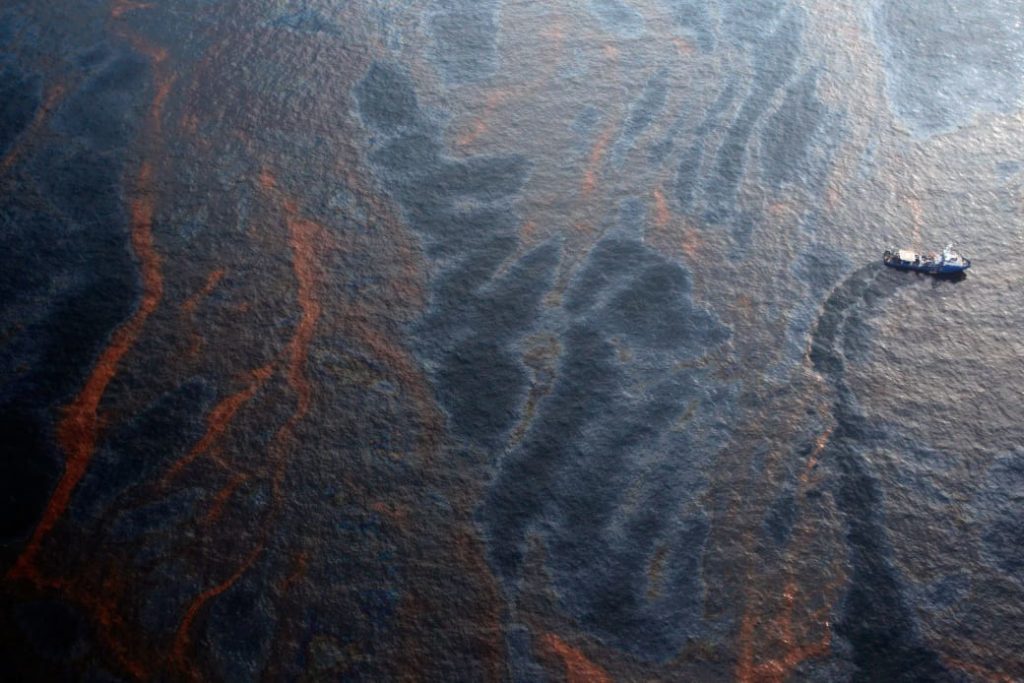
Crude oil that leaked from the Deepwater Horizon in the Gulf of Mexico, on April 28, 2010, near New Orleans. Chris Graythen / Getty Images
Less than two weeks later, BP began running commercials in which its CEO at the time, Tony Hayward, called the spill “a tragedy that never should have happened,” before solemnly looking into the camera. “To those affected and your families, I am deeply sorry.”
The US commission found that employees on the Deepwater Horizon rig ignored early warning signs, and missed opportunities to prevent the explosion that would lead to the largest oil spill of the 21st century. US researchers received billions in funding from both BP and the government, and proved that nearly the entire US Gulf Coast was affected, from Florida to Texas. They tracked large oil plumes in the water, traced the fingerprint to damaged corals on the sea bottom, and saw decreases in numerous fish and animal populations. A federal panel transferred all cases related to the spill to a Louisiana courthouse because of their experience with complex cases, like Hurricane Katrina. BP eventually pleaded guilty, and lawsuits against the company piled up from affected Americans.
Attempts to reach Chris Sladen, and to organize interviews with representatives from BP USA and BP Mexico, were declined or ignored. BP USA noted in a reply by email “that all available evidence confirms that oil from the Deepwater Horizon incident did not reach Mexican waters or shorelines,” attaching a report by a US scientist.
The Mexican government initially agreed to finance studies beginning in July 2010, by various academic and state-funded institutions coordinated by Mexico’s National Institute of Ecology and Climate Change (INECC). Soto’s team launched first on what was planned to be a five-year study of the Gulf.
Mexico only had one boat capable of the expeditions that had to be undertaken.
But Soto repeatedly stressed to BuzzFeed News how his team was underfunded and their equipment was subpar compared to their US neighbors. Mexico, he said, only had one boat capable of the expeditions that had to be undertaken, and it had to be shared by numerous institutions involved in the studies funded by the Mexican government. In contrast, 6,500 vessels were used to measure the damage to US waters at the height of the research response in 2010, according to BP.
More than two years after the Deepwater explosion, on Dec. 1, 2012, Peña Nieto took office. He had run on a platform of change, with ambitious plans to reform the country’s energy industry, opening it up to foreign investors.
The following spring, on April 19, 2013, for reasons that still remain unknown, the Mexican government finally decided to file a lawsuit against BP, accusing them of damaging Mexican waters. But shortly after, Soto’s investigation into the effects from the spill was ended by the government. Once Soto’s third expedition ended that year, he said the remainder of his studies were canceled.
“Suddenly we were informed by the federal government that there was no longer monetary support for our campaign,” Soto said. “They said very clearly, ‘our priorities changed.’”
The Mexican government funded 22 studies related to the BP spill between 2010 and 2014. Official documents for 19 of the studies reveal that they cost nearly $4 million, although the INECC did not provide figures for the other three studies and the final total is unknown. By contrast, in the US, a single research working group created by BP conducted more than 240 studies to the tune of $1.3 billion in less than five years after the spill. That doesn’t include the numerous other institutions and groups studying the US waters.
“We’re neighbors, and your house is on fire. And we’re very close neighbors, and you’re saying nothing happened to you?”
The INECC told BuzzFeed News it didn’t cancel the studies, but rather used up the available budget. The INECC described the budget as “adequate” but confirmed there was a lack of resources, specifically referencing the single boat capable of carrying out the studies. It also said that, while it was easy to study the effects of the Deepwater spill in US waters, because of their proximity, it was much harder to establish the impact on Mexican waters. The INECC added, however, “it is the responsibility of the Mexican government to complete the monitoring to determine any potential damage, given that it is an interconnected ecosystem. This type of event can have long-term effects.”
Nineteen of the 22 studies had been approved before Mexico filed its lawsuit against BP. No further studies related to the spill were approved after Peña Nieto launched his landmark energy reform in August 2014, raising questions about the government’s desire to get to the bottom of what happened.
Soto repeatedly lambasted the government for the inadequate support he received, his funding being cut before he could finish, and how he was never able to coordinate with other institutions’ scientists who studied the aftermath of the spill to see how their research compared. Soto said he was contacted early on by Mexican lawyers working on the lawsuit against BP, and offered to be “helpful,” but never heard from them again.
He remains convinced the region needs further study and that BP is most likely responsible for the damage to Mexican waters.
“We’re neighbors, and your house is on fire. And we’re very close neighbors, and you’re saying nothing happened to you?” he asked rhetorically. “I mean, it’s ridiculous.”
BP, one of the world’s largest oil companies, undertook a major rebranding in 2000 in a bid to create an eco-friendly image. It spent more than $150 million on its new logo, adopting a sunflower, named “Helios” after the Greek sun god.
A transnational energy conglomerate with a presence in 72 countries, BP conducts around a third of its business in the US — by far its largest market. The sunflower first became associated with a US disaster in 2005 when an explosion at BP’s Texas City refinery in 2005 killed 15 workers and injured 170 more. BP paid more than $1.5 billion related to the explosion in compensation. Less than a year later, a corroded BP pipeline in Alaska leaked hundreds of thousands of gallons of oil; the affected state received $225 million from BP and its partners in the project.
Billions have been paid to US interests.
The Texas City and Alaska payments hadn’t been fully paid out when the Deepwater Horizon rig exploded. Images of oil-covered dolphins and pelicans went around the world, and yet again BP found itself at the center of an environmental disaster.
Although the spill has faded from the public consciousness in the years since, lawsuit after lawsuit has passed through the Louisiana court, and billions have been paid to US interests.
It could not be more different in Mexico.
A number of Mexican Gulf states independently filed separate lawsuits in 2011, but the federal government waited two years and 364 days to sue BP — the last day possible to do so. When they did submit their suit to the US court on April 19, 2013, they made damning allegations, stating that “the spill remains in the waters of the Gulf of Mexico endangering the adjoining shorelines of Mexico. … [T]he Gulf of Mexico is affected by deep currents that run from east to west in a circular pattern and which currents have transported a submerged plume of oil, dispersants and breakdown chemicals into the waters of Mexico.”
Just a month later, in May 2013, the Louisiana court consolidated the Mexican lawsuit into a multi-district litigation, bundling it with hundreds of other new cases. The court then suspended the federal government lawsuit until further notice. Several months later the court dismissed the separate lawsuit brought by the Mexican states, because the government was now bringing a federal lawsuit, rendering them redundant.
This federal lawsuit represented the last chance for Mexico’s elected officials to get some compensation for the country’s fishermen and their families.
According to a freedom of information response from the foreign ministry, the lawsuit didn’t make any progress in the US legal system between May 2013 and March 2018, when the Mexican government decided to settle the case against BP. This decision was based on a voluntary dismissal agreement, seen by BuzzFeed News, which was cosigned by the government and BP in February 2018, clearing the oil giant of any responsibility for damage to Mexican waters in exchange for $25.5 million.
The US legal firm hired to represent Mexico, Schulte Roth & Zabel, was paid nearly $2 million by the Mexican government between 2010 and 2017 (figures for the final 2018 payments are not available). Schulte Roth & Zabel declined to be interviewed for this story.
One of the lawyers representing more than 10,000 Mexican fishermen in their lawsuit, Horacio Polanco, expressed his anger that only people north of the border are getting paid out by BP.
“The only injustice is that the payments are exclusively for the Americans,” Polanco said. He is still waiting for his day in court many years after filing, and is upset that the federal government prevented him from getting valuable evidence that he would need to bolster the Mexican fishermen’s case, by blocking access to its own studies for years.
BP did not accept any responsibility for damage to the territory of Mexico, and while the lawsuits against the company stagnated, BP quickly moved into Mexico’s new energy market, investing heavily in Peña Nieto’s energy reform.
This 2014 reform was undoubtedly Peña Nieto’s most surprising initiative — opening up the country’s nationalized energy sector to foreign investment for the first time in 80 years. Four rounds of bidding were to take place before Peña Nieto left office; in the first three rounds more than 100 oil development contracts were sold with a promised investment of more than $100 billion. If handled fairly, many economists hoped it would mark a revolutionary moment in Mexico’s fortunes.
“The only injustice is that the payments are exclusively for the Americans.”
Oil companies were lining up at the door to bid in Mexico’s auctions, from supermajors like Shell and Chevron to lesser-known companies from China and Canada, as well as Mexico’s formally state-owned oil company, Pemex.
People like Polanco do not understand why the government invited BP to the party.
“BP wants to be Mexico’s partner in the exploitation of deepwater deposits,” Polanco said, looking bewildered. “How are you going to give a seat at your table to someone who doesn’t treat you with respect?”
BP did very well at the table, winning the drilling rights to three oil blocks in the Gulf of Mexico; a 25% stake and a 50% stake in two other Gulf drilling sites through a subsidiary company called Pan American; and two natural gas pipeline contracts; and securing a deal to open 1,500 BP-branded gas stations by 2021. The foreign ministry told BuzzFeed News there had been no conflict of interest when negotiating these deals with BP.
The new drill sites will add to the four production platforms BP still operates in US waters in the Gulf, which produce more than 300,000 barrels a day. BP plans to begin drilling first near Veracruz and Tabasco in 2020 — just off the coast of Tonalá.
Jiménez, the fisherman, spent a quiet afternoon in June reflecting on a recent trip he took to see his lawyer in the coastal city of Veracruz. He was surrounded by siblings, children, and grandkids, who looked on as he spoke of his shock at seeing a gas station with a big BP sunflower sign, “calmly working, as if they hadn’t done anything here.”
The fisherman will have to get used to it — BP-branded gas stations have been sprouting up around the country, and already exist in over half of Mexico’s 31 states, including Veracruz and Tabasco.
“And now they’re going to work the [oil] platforms?” he scoffed. “It’s going to make it all worse.”
“Why don’t they want to solve the problem they made with us?”
Jiménez can only watch as BP invests in Mexico, including nearly $200 million in the oil blocks nearby, which are now set for drilling in less than two years. This week, on Sept. 29, according to the government’s official energy sector auction website, BP is going to announce its final work program and budget for the project.
“Why don’t they want to solve the problem they made with us?” Jiménez asked. “They’re already in the country, taking the money from here. The government’s accepted the company to come in, like, Juan por su casa, as they say,” a colloquial expression for when somebody comes into your home and does as they please.
The Jiménez family home is a ramshackle one-room hut; the waterproof screens that protect it during the rainy season are partly made of repurposed political banners from past election campaigns, including some from Peña Nieto’s Institutional Revolutionary Party, or PRI.
Peña Nieto’s term has been controversial, to say the least. His approval ratings hit record lows, and were already below 20% when the energy reform’s gasoline price hike — known as the gasolinazo — took effect in 2017, leading to protests across the country. A slew of corruption scandals, like the Casa Blanca case that involved Peña Nieto’s wife’s mysterious purchase of a luxury home from a preferred government contractor, further fueled widespread distrust in the government. By his final year in office in 2018, Mexico hit unheard-of levels of violence — July was the bloodiest month on record, surpassing the previous peak in May.
For many in Mexico, Peña Nieto’s time couldn’t end soon enough.
“We just exist now. We lived from fishing. But now that’s over.”
“We’re forgotten by the rulers, the politicians, the presidents,” said Edel Jiménez, Evelio’s older brother. “We just exist now. We lived from fishing. But now that’s over.”
Their anger reflects a mood across the country, which saw the overwhelming victory of the leftist populist López Obrador in this summer’s election. After his win, he told a gathering of thousands of his supporters in Mexico City that when he officially takes office in December, “we will respect everyone, but we will give preference to the most humble and forgotten.”
That night, he took aim specifically at Peña Nieto’s energy reform, saying his administration would revise all the contracts signed, and if they found “anomalies” they would “take the legal route” in both national and international courts.
“Under no circumstance will [I] allow corruption, nor impunity.”
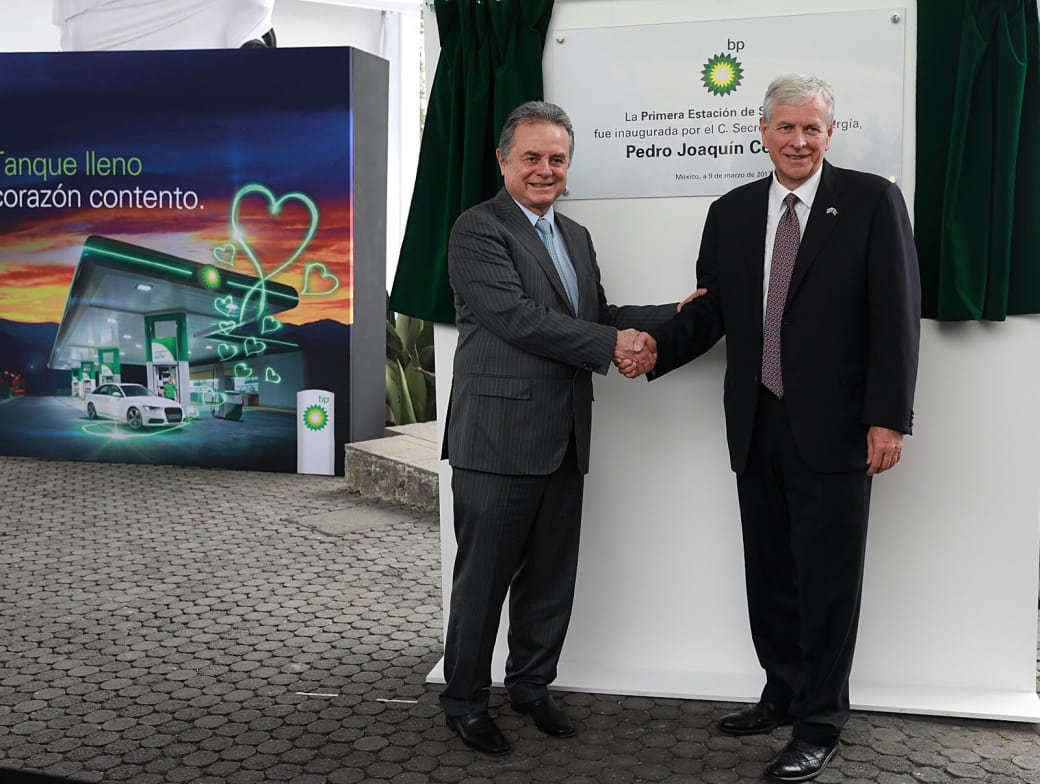
Pedro Joaquin Coldwell, Mexico’s energy minister (left), shakes hands with Chris Sladen, then president of BP Mexico, March 9, 2017.
Susana Gonzalez / Bloomberg via Getty Images
On Feb. 15, 2018, the Mexican government agreed to the $25.5 million payout from BP, in return for settling their lawsuit, clearing the transnational energy giant of all damages to Mexican waters.
Court documents regarding the voluntary dismissal, minutes from various meetings of governmental bodies from 2014 to 2017, and a review of academic papers based on classified scientific studies appear to show the government ignored scientific evidence regarding BP’s blame for the spill. Instead, the government accepted what seems to be a one-sided deal.
Trying to get to the bottom of the backroom negotiations between BP and the Mexican government required two years of freedom of information requests, and reviewing thousands of documents. The government routinely returned heavily redacted documents, questions were repeatedly ignored, and the few responses provided were riddled with spelling mistakes and incorrect information, even on such basic items as dates and costs.
But what limited responses they did give paint a picture of an administration failing to put its citizens first.
Following a request in 2016, the foreign ministry initially said they could not provide information about the status of the government lawsuit, saying that to do so “would jeopardize our country’s claims to reach a compensation.” The following year, the INECC said it would not provide the conclusions of its reports because they were classified while the case was ongoing.
In May 2018, the various scientific bodies that had studied the spill said they were not allowed to release their work without the say-so of the INECC. The INECC subsequently passed the buck to the foreign ministry, saying that “the possibility of declassifying [the studies] is currently being reviewed with the foreign ministry.”
But this was months after the Mexican government had accepted the $25.5 million payment that acquitted BP of any wrongdoing, and after it dismissed its own lawsuit in March. There appeared to be no legal justification for withholding the studies once the Louisiana court had accepted the government’s voluntary dismissal.
A review of the minutes of meetings held at the foreign ministry in Mexico City reveals that officials had in fact been discussing a possible negotiation with BP from at least February 2017. Members of the INECC, the foreign ministry, and their US lawyers then met with BP representatives in New York in July 2017 to negotiate the settlement, which was officially filed in a US court in February 2018, according to minutes seen by BuzzFeed News.
During these meetings, BP offered an initial payment of $20 million. In October 2017, Mexican officials prepared a counterproposal of $50 million.
BP would go no higher than half that, $25.5 million.
According to the 2018 settlement agreement, obtained by BuzzFeed News, $15.3 million is for “the reimbursement of Mexico’s past monitoring investigation and other costs related to the Deepwater Horizon incident.” $10.2 million is to be paid to the INECC for “Mexican programs for the socio-environmental protection, conservation and/or restoration of the Gulf of Mexico.” There is no detailed explanation of exactly how the money will be spent, or who will ensure the money is distributed fairly.
This is peanuts compared to BP’s $500 million, 10-year program to monitor US waters set up just over a month after the spill, with yearly conferences to present findings, discuss solutions, and continue in the recuperation of the US Gulf ecosystem. Let alone the over $60 billion BP has paid to US interests as compensation for the spill.
The legal document about the agreement and dismissal says that the settlement will remain confidential unless both parties agree to release the information. To date, there has been no BP or government announcement about the dismissal or the payment.
$15.3 million should have been paid out by May 15. The final $10.2 million is set to be sent on Nov. 30 — the last day of Peña Nieto’s presidency.
The foreign ministry and the INECC said the first tranche had been deposited by BP into the country’s treasury. Both noted they would not be responsible for overseeing how the money was spent. The final payment would go to an as-yet-unspecified program and both agencies said they were unsure who would oversee it.
It is unclear whether any Mexican fishermen will receive any of the money.
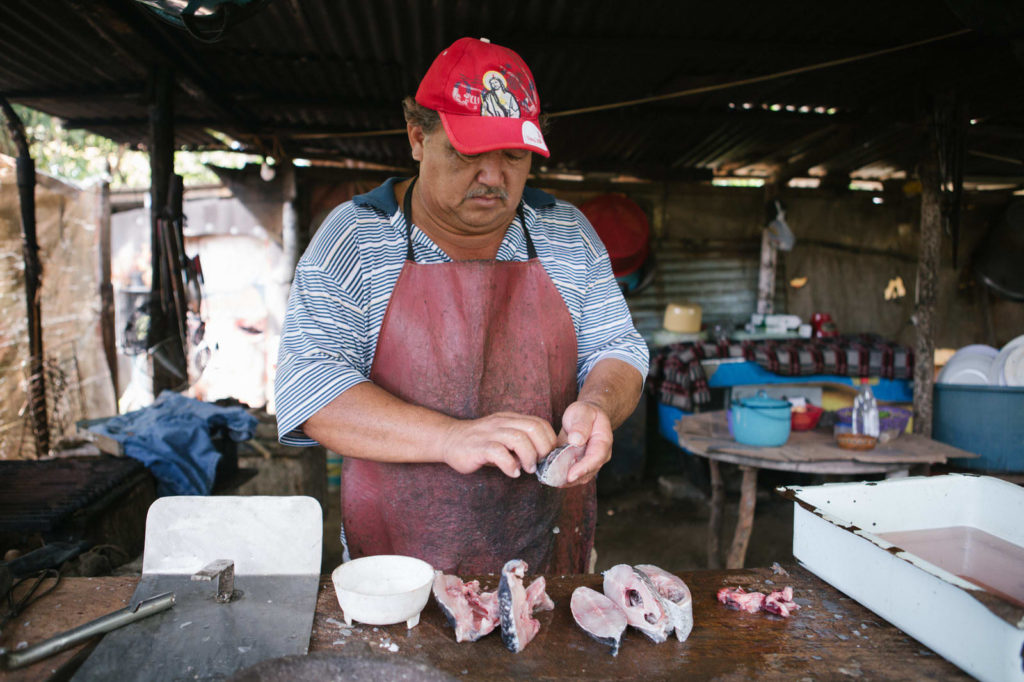
Evelio Jiménez prepares fish in the kitchen of his restaurant, El Buzo, in Tonalá.
Alicia Vera for BuzzFeed News
The Mexican government may have given up its own lawsuit, but there is good reason to believe that the all-important hydrocarbon fingerprint might actually have been found — and possibly ignored.
BuzzFeed News can reveal that the Mexican government was provided evidence that scientists may have located the BP fingerprint in Mexican waters. The evidence was presented as part of the separate state lawsuits by a scientist named Sergio Jiménez.
In a signed affidavit filed in the Louisiana court from Jan. 24, 2013, seen by BuzzFeed News, Jiménez (who is not related to the Jiménez fishing family) said that he conclusively tracked oil onto the Tamaulipas shores, calling it “an identical match to the fingerprint provided by BP in the Deepwater Horizon litigation.” Jiménez, who worked for more than a decade as the government’s master oceanographer for the Tamaulipas border region, said he also discovered oil plumes as far south as Veracruz in 2011 that “continue to impact its shores and marine life.”
Sergio Jiménez told BuzzFeed News he stood by his statement, saying he had enough findings “to show that there was damage to the Mexican coastline, at least in Tamaulipas, due to the effects of the BP spill.”
Freedom of information requests reveal that, during a January 2014 meeting, various arms of the Mexican government — including the foreign ministry and the INECC — discussed using evidence from the state lawsuits against BP. This predates the federal government’s lawsuit, and it is unclear why this evidence was never used.
Sergio Jiménez was not the only scientist to potentially discover the fingerprint.
In July, the government finally published 20 of its 22 studies online, following repeated freedom of information requests. But the presentation of the studies was problematic — many of the links initially didn’t work, some of the studies were listed as “in development” although they had ended years before, and others just had the name of the study with no hyperlink. Only after an official appeal to Mexico’s transparency agency by BuzzFeed News were the studies put online in full in August.
It’s unclear why the government would be so reluctant to release its findings. Most of them were filled with little more than statements that additional research into the effects of the spill was needed, or that it could not be conclusively proven that BP polluted Mexican waters. None of the 20 released studies claimed to have discovered the all-important fingerprint.
But two studies remain classified, both conducted by the country’s Petroleum Institute (IMP).
The IMP’s studies were the last ones approved before Peña Nieto’s 2014 energy reform. The IMP said that it was barred under federal law from releasing them because they contained “industrial secrets and/or commercial secrets,” claiming “the sites where [the IMP] worked have been hardly studied so the information by itself is strategic.” The IMP then added to that vague statement, that “also [the IMP] reports that the conclusions of the studies don’t reveal environmental damages.”
However, while the government continued to withhold their work, five IMP scientists published a 2017 article in the Marine Pollution Bulletin, a peer-reviewed academic journal. The scientists detailed how they traced the 2010 spill into Mexican waters, saying they had discovered a number of oil pollutants in over half of the deepwater locations in their studies and that “the [Deepwater Horizon] oil spill is a likely source of such pollutants.”
The lead scientist of the IMP studies, who was a coauthor of the 2017 article, declined an interview request from BuzzFeed News, saying that as an IMP investigator she was not authorized to speak to the media.
Peña Nieto gave few interviews during his time in office, but in late August he made the rounds with several prominent Mexican TV programs and newspapers, reflecting on his time in office. He stuck to the same themes, about history judging him, and being proud of what he had accomplished, specifically saying that his reforms would be his “most important legacy, because the development of these reforms will translate into greater economic growth, generating greater opportunities for Mexicans.”
López Obrador takes office on Dec. 1 and he has said one of his first orders of business will be to make sure the energy reform is carried out cleanly. He’s already pushed back the final round of oil contract bids until early next year. When he held a meeting in his home state of Tabasco earlier this month with representatives from foreign and domestic companies across the energy sector, he warned the audience there would be a “zero-tolerance policy” when it comes to the oil industry.
But whether López Obrador will follow through on all his big plans is a point of skepticism for many. Most of his campaign promises are still being fleshed out, and many are left wondering what he actually plans to do.
*****
Mauricio Gómez — Evelio Jiménez’s son-in-law — quit school when he was 6 to become a fisherman, but now he claims he can barely feed his three daughters. He repeatedly said that he felt “humiliated,” by both the Mexican government and BP. He hoped López Obrador would finally address the issue of what happened in the Gulf of Mexico, claiming that few people in the country were as “abandoned” as the coastal fishermen.
“No candidate takes the fishermen into account. None. They’ve always taken into account the oil industry, which is the one that works with the government,” said Gómez angrily. “We don’t exist to the government.”
The oldest of Gómez’s three daughters will soon graduate from high school. She lay in a hammock nearby, and when asked if she planned to join the family business she said no, because “there aren’t enough fish left.”
Instead, she planned to join the navy and work for the government who her father says abandoned them.
Why?
“So I can still work on the sea,” she said. ●
____________________________________________
Claudia Ocaranza from the journalism department of the transparency initiative PODER contributed reporting to this story.
 Journalist, writer, photographer, lover, hater. Contact Nathaniel Janowitz at ngjanowitz@gmail.com. Got a confidential tip? Submit it here.
Journalist, writer, photographer, lover, hater. Contact Nathaniel Janowitz at ngjanowitz@gmail.com. Got a confidential tip? Submit it here.
Go to Original – buzzfeednews.com
DISCLAIMER: The statements, views and opinions expressed in pieces republished here are solely those of the authors and do not necessarily represent those of TMS. In accordance with title 17 U.S.C. section 107, this material is distributed without profit to those who have expressed a prior interest in receiving the included information for research and educational purposes. TMS has no affiliation whatsoever with the originator of this article nor is TMS endorsed or sponsored by the originator. “GO TO ORIGINAL” links are provided as a convenience to our readers and allow for verification of authenticity. However, as originating pages are often updated by their originating host sites, the versions posted may not match the versions our readers view when clicking the “GO TO ORIGINAL” links. This site contains copyrighted material the use of which has not always been specifically authorized by the copyright owner. We are making such material available in our efforts to advance understanding of environmental, political, human rights, economic, democracy, scientific, and social justice issues, etc. We believe this constitutes a ‘fair use’ of any such copyrighted material as provided for in section 107 of the US Copyright Law. In accordance with Title 17 U.S.C. Section 107, the material on this site is distributed without profit to those who have expressed a prior interest in receiving the included information for research and educational purposes. For more information go to: http://www.law.cornell.edu/uscode/17/107.shtml. If you wish to use copyrighted material from this site for purposes of your own that go beyond ‘fair use’, you must obtain permission from the copyright owner.
Read more
Click here to go to the current weekly digest or pick another article:
ENVIRONMENT:
- COP30’s Three F-Words: Failure on Fossil Fuels
- Declaration of the Peoples’ Summit Towards COP30
- Plutonium Found at Former San Francisco Naval Shipyard – Navy Faces Cover-Up Claims
ANGLO AMERICA:
- ‘We Want It Back’: Trump Asserts U.S. Claims to Venezuelan Oil and Land
- Judge, Jury, and Executioner: On U.S. Assassination Policy 1975-2025
- Everything the Trump Administration Is Doing in Venezuela Involves Oil and Regime Change—Even if the White House Won’t Admit It
ENERGY:
- China Opens World’s Largest Offshore Solar Power Facility
- Nuclear Industry Takes Control of NASA
- The Nuclear Energy Dilemma: Climate Savior or Existential Threat?
LATIN AMERICA AND THE CARIBBEAN:
- Operation Condor: Transnational Murder Syndicate
- Pirates of the Caribbean: US Moves unto Piracy to Enforce Sanctions against Venezuelans
- Venezuela Charges Washington with ‘Theft, Piracy’ after Seizure of Oil Tanker
JUSTICE:
- Int’l Court of Justice Finds Israelis Broke Law by Starving Palestinians of Gaza
- Gaza Tribunal: A Historic Statement in the Shadow of Testimony
- Bertrand Russell's Historic War Crimes Tribunal against the US in Vietnam, 1964-1967
CAPITALISM:
